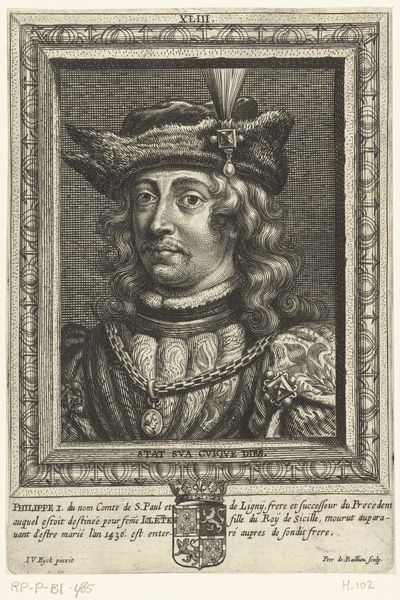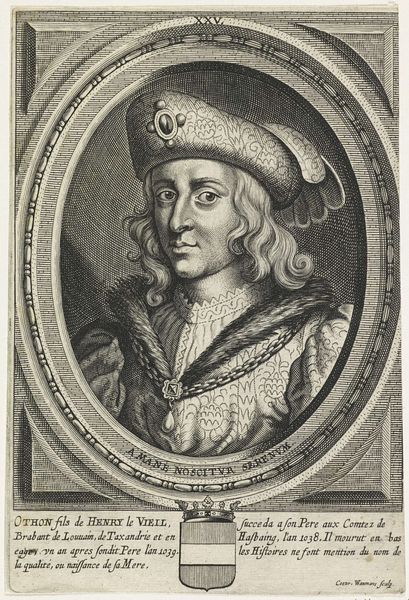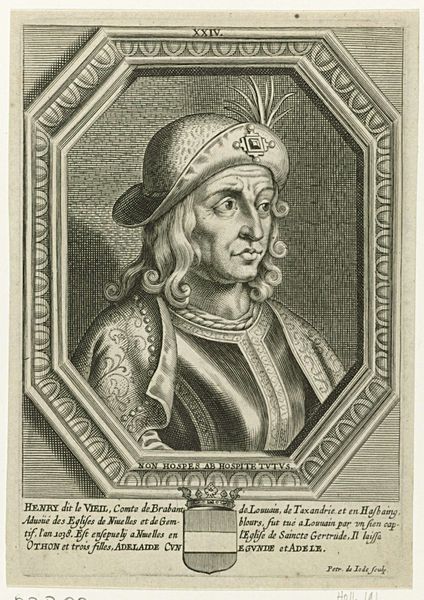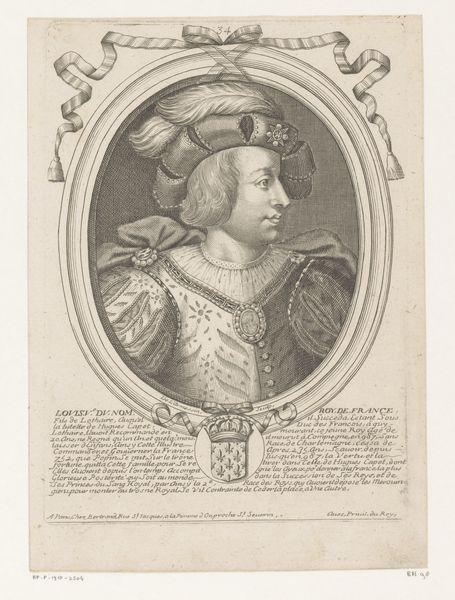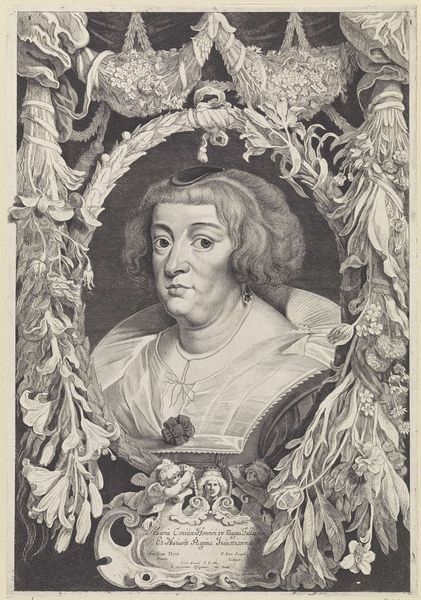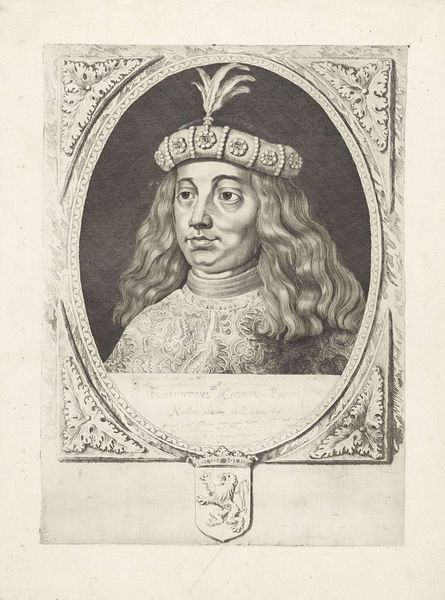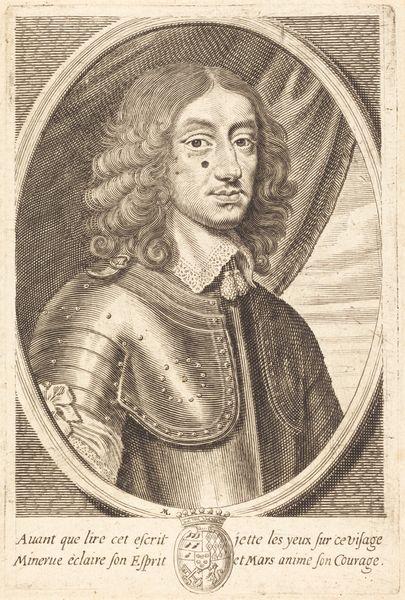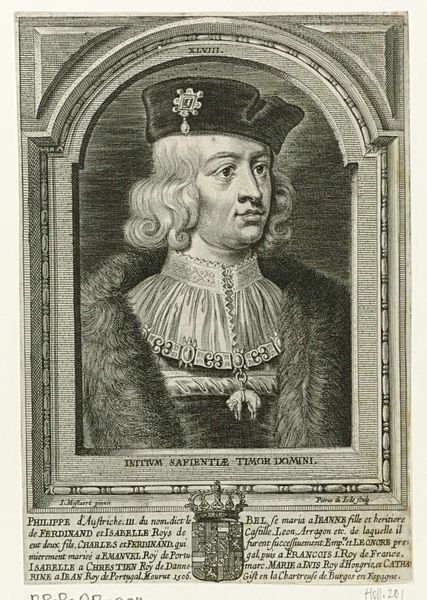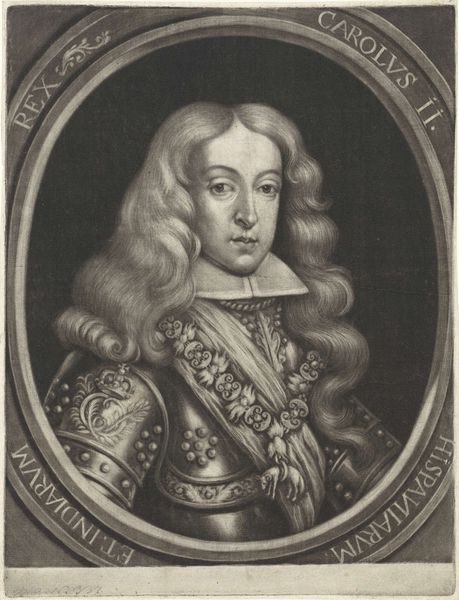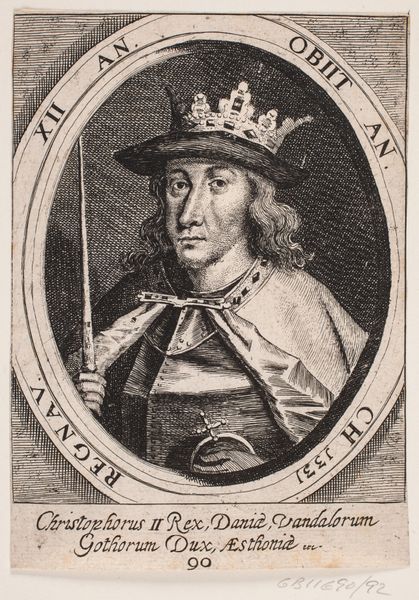
print, engraving
#
portrait
#
baroque
# print
#
figuration
#
history-painting
#
engraving
Dimensions: height 177 mm, width 119 mm
Copyright: Rijks Museum: Open Domain
Editor: Here we have a portrait of Godfried III, made after 1661 by Pieter de Jode II. It’s an engraving, and something about the rigid lines of the armour and the subject’s stern expression makes it feel quite formal and imposing. How would you interpret this work? Curator: I’m drawn to the way this print reproduces armour as a technology of power. Consider the labor involved. Each piece was forged, fitted, polished – and then rendered again through the engraver’s skill. What does that meticulous recreation say about the culture and the societal position of Godfried III? Editor: That's a great point. It really emphasizes the importance of this person’s position. But what about the choice of engraving? Was it simply the most efficient method for mass reproduction? Curator: Not simply. Engraving, particularly during this period, also signified permanence and authority. It mirrored the subject’s supposed strength. Consider too, who consumed these images? These prints functioned within a network of power, solidifying the standing of Godfried through accessible – but skillfully crafted – representations. Editor: So, it's not just about depicting the man, but about solidifying his image, manufacturing a persona for the public through the very material and technique employed. That really sheds a new light on the process. Curator: Exactly. By exploring the means of production, from the metal of the armor to the ink on the page, we understand that this image wasn't just seen, it was constructed to influence perceptions and uphold hierarchy. Editor: I hadn't thought of the materials that way before – almost as active participants in the portrayal of power. Curator: And power leaves its mark, literally, on the tools and hands involved in its portrayal.
Comments
No comments
Be the first to comment and join the conversation on the ultimate creative platform.
